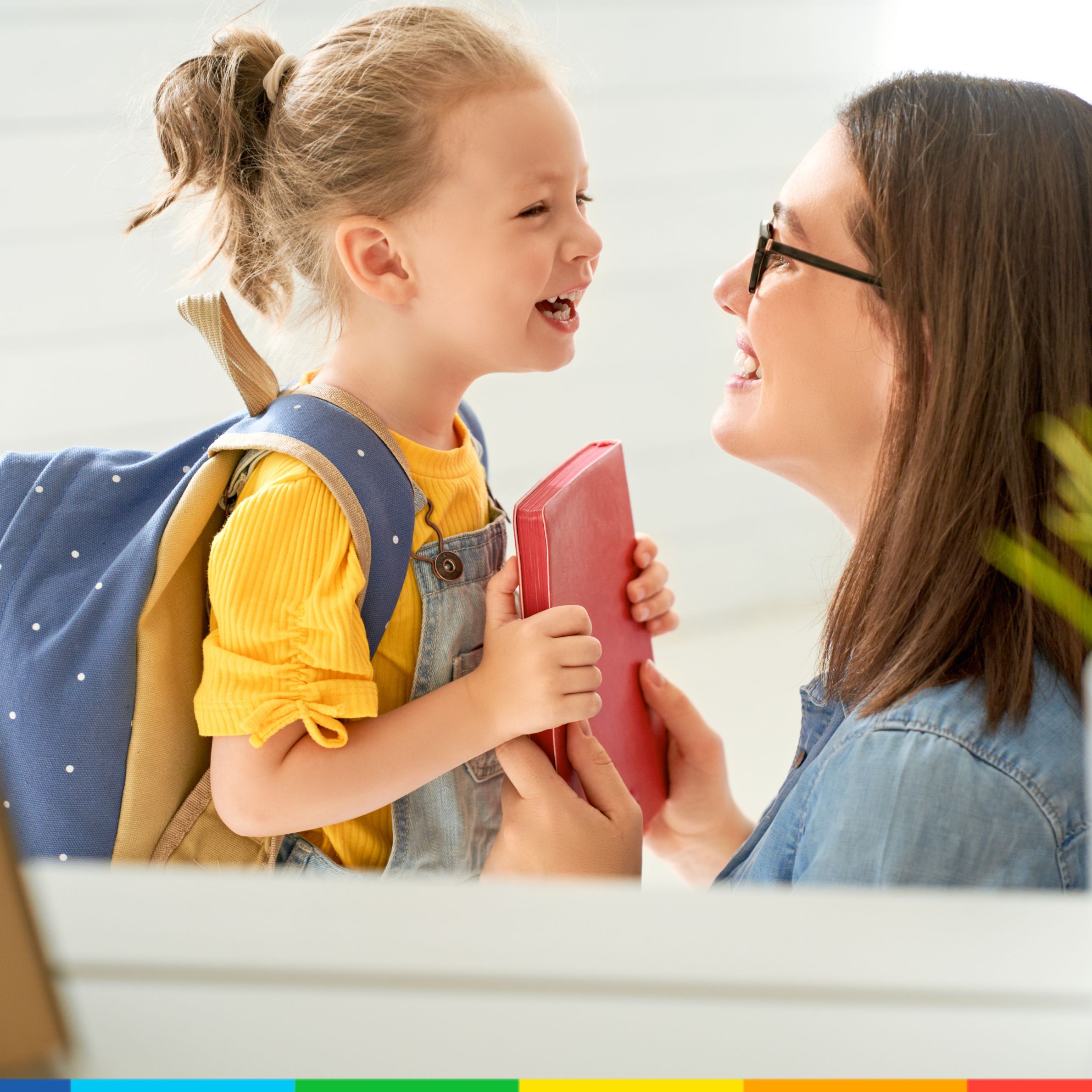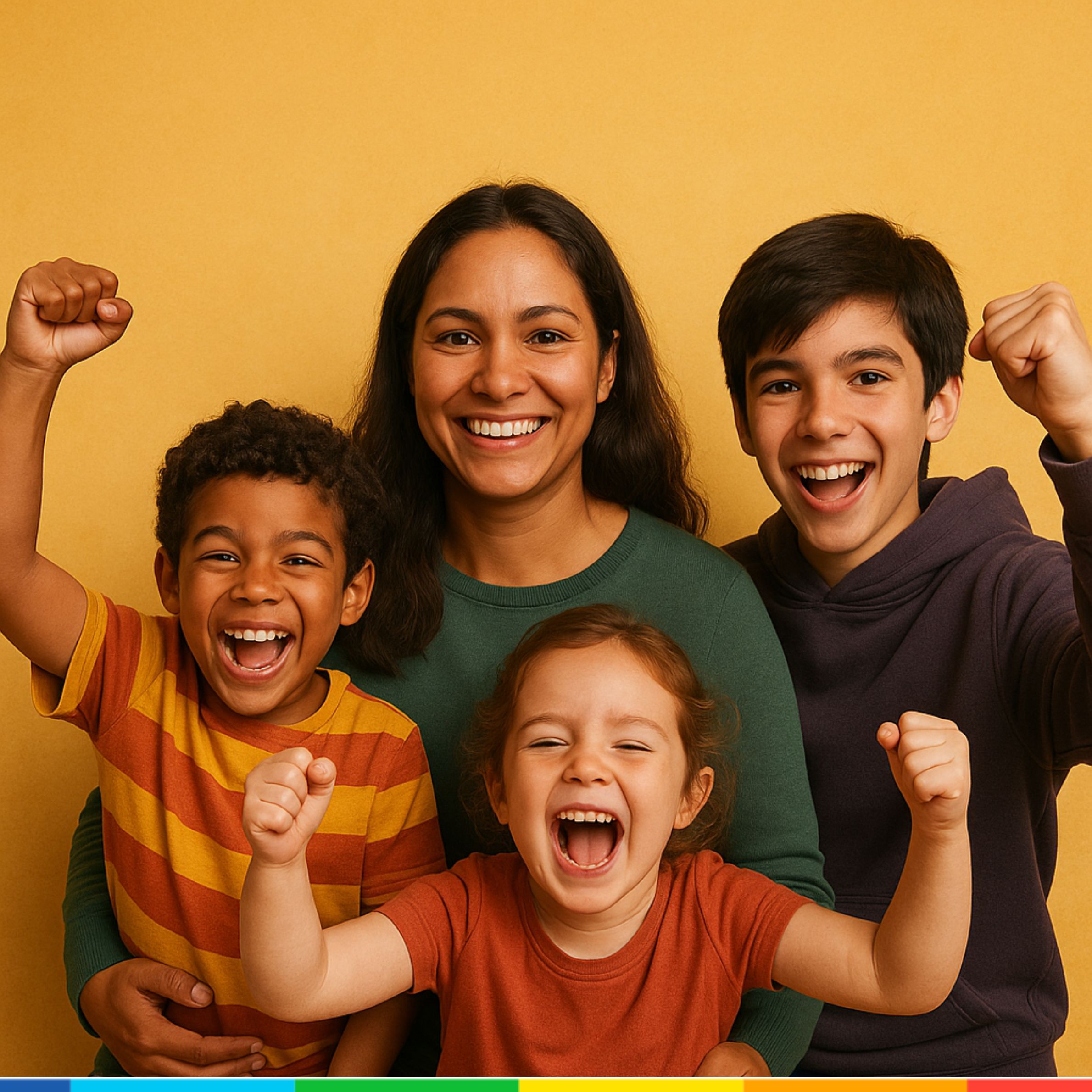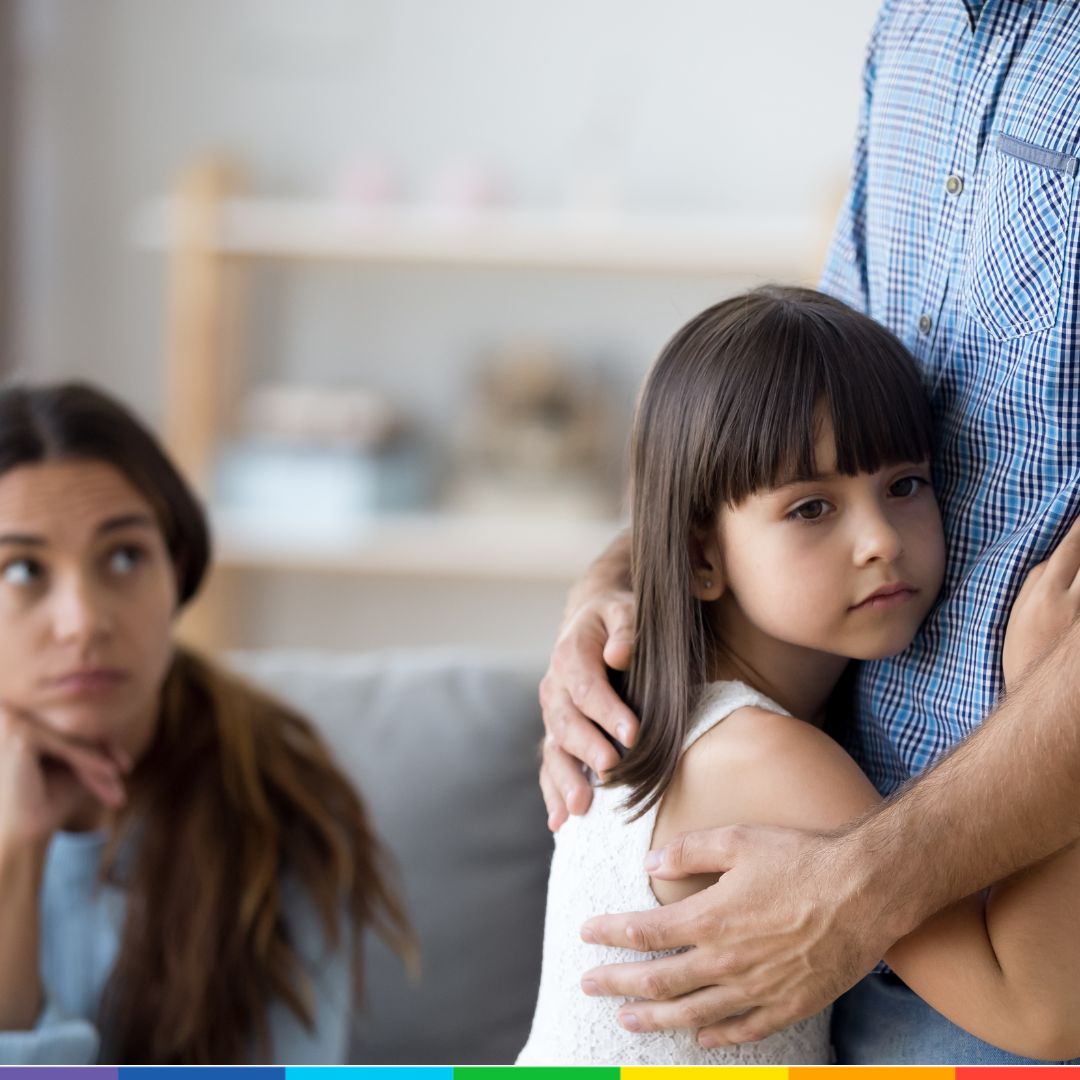
Parenting Tips
Mindfulness for Kids: Techniques to Nurture Calm & Focus
September 21, 2024
Related
Topics

Hey
-

Back to School: How to Prepare for a Smooth First Day?
September 1, 2025
-

How to Build Resilience in Children? – Never Give Up!
August 8, 2025
-

Parents Saying ‘No’ – How to Set Limits Without Guilt?
July 15, 2025
-

-

Green Parenting: How to Make Your Home More Eco-Friendly?
April 24, 2025
Ready for more?
Hey
Sign up for Rainbow Kiddies newsletters for more stories and updates
Before we delve into our topic about mindfulness for kids, let us understand what the term itself means. To set the record straight, it is beneficial for anyone and everyone, not just kids. The techniques explained in this blog can be equally useful to caregivers as well.
What is Mindfulness?
As per the Cambridge dictionary, “Mindfulness is the practice of being aware of your body, mind, and feelings in the present moment, thought to create a feeling of calm. Mindfulness can be used to alleviate feelings of anxiety and depression.”
Now let us see a more psychological definition from the American Psychological Association, “Mindfulness is awareness of one’s internal states and surroundings. Mindfulness can help people avoid destructive or automatic habits and responses by learning to observe their thoughts, emotions, and other present-moment experiences without judging or reacting to them. Mindfulness is used in several therapeutic interventions, including mindfulness-based cognitive behavior therapy, mindfulness-based stress reduction, and mindfulness meditation.”
Jon Kabat-Zinn defined mindfulness as “paying attention in a particular way, on purpose, in the present moment, and nonjudgmentally”. He was the one who developed Mindfulness-Based Stress Reduction program at the University of Massachusetts Medical School. He wrote the book Full Catastrophe Living in 1990 based on his experiences with this program since 1979 and to offer guidance on living mindfully.
To state in the simplest terms, it is all about paying attention to the present moment deliberately, without any judgment. Mindfulness has two parts to it – attention and acceptance. Attention is about being present in the moment – being aware of your thoughts, breathe, body, feelings and physical sensations. Further, acceptance is all about observing all of this without any judgement. You note the feelings and sensations, then let them go. Mindfulness has much to do with the principles of Zen Buddhism, or is rather based on it.
Attitudes Associated with Mindfulness
The following attitudes are associated with mindful living and most of the mindfulness practices:
- Nonjudgemental – we are aware of our judgements but we keep them aside while in this practice.
- Acceptance – accept whatever you feel during your practice. Do not avoid or judge it.
- Patience – take any mindfulness practice, it takes some time and is a slow process. So patience is very important. Whether it be breathing, eating, walking, listening or doing anything mindfully, you take it slow and with patience.
- Clear and open mind – consider it as a new experience like a baby does. Be open to whatever sensations or feelings it brings to you.
- Trust – trusting our own experience helps us understand that everyone thinks or feels differently and our experience is true for us, just like anyone else’s is to them. This helps to develop self-trust.
- No expectations – take any mindfulness practice, your experience, its outcomes, your thoughts and sensations are all yours to own and have. There is no right or wrong outcome or sensation. So you are not measuring your outcomes. You just accept whatever it gives you. In this world full of hustle-bustle, your mindfulness practices are something that will make you feel free and weightless, or stress free for as long as it lasts, or until you keep practicing it.
- Let go – let go of your past experiences to thoroughly enjoy your mindfulness practices. This is allow you to have and enjoy the new experiences without any judgement whatsoever.
How Does Mindfulness Help?
Researchers believe that mindfulness lowers stress response and hence saves the body from worse issues, some even as bad as impairing the body’s immune system. Most of the benefits of mindfulness are simply related to this ability of the practice. It also changes brain activity and structures in areas associated with attention and emotional regulation. People who have received mindfulness therapies have been found to be more focused on the present and indulge less in negative thoughts. Most of the research in mindfulness is focused on Mindfulness-based stress reduction (MBSR – an 8-week meditation therapy or course involving meditation and yoga) and Mindfulness-based cognitive therapy (MBCT – this therapy combines MBSR and cognitive behavioural therapy to treat depression).
Yet there so many mindfulness techniques out there to simply practice at home with your kids or family. These will help the kids to steer away from or handle major issues mindfully and in helpful ways. We are here to share some of these techniques with you today. Meanwhile it is always advisable to take professional help if you feel that your child or someone else in the family has a major issue already. Improper practice accompanied by inappropriate support/ supervision might worsen the condition, instead of helping.
Meanwhile, remember that you should teach them these techniques while they are in a good mood. And while they are still young. Don’t try to teach them when they are already fussy. It will only worsen the situation. Also teach them about different feelings early enough so they can identify, express and handle them easily. Watch our story on emotions and feelings with them to help them in this journey.
A Glimpse of Mindful Parenting
Today we even have the concept of mindful parenting which involves being fully present and attentive in parent-child interactions. It is about fostering a non-judgmental awareness of both the parent’s and child’s emotions and behaviors. This approach enhances emotional regulation, reduces stress, and strengthens the parent-child bond. Practicing mindfulness in parenting can lead to improved communication, increased empathy, and a more harmonious family environment. This is all about slowing down, understanding and taking in the situation, and making the kids feel that you have their back. This will help them feel safe in their environment and hence help them stay emotionally healthy.
Since this is a topic that needs more exploring and understanding, we will soon be posting one entirely dedicated to the topic. Follow us for further updates.
Types of Mindfulness Practices
Mindfulness for kids can take various forms, tailored to different ages, environments, and personalities. Here are some of the most common types of mindfulness practices that can be particularly beneficial for kids. Incorporate at least 1 or 2 into their daily routines, and maybe into yours. So you can practice together and then savor the benefits together.
Breathing and Meditation Focused
- Breathing Exercises – One of the simplest and most effective forms of mindfulness for kids is focused breathing. This involves paying close attention to the breath, observing each inhale and exhale. For children, this practice can be taught through fun visualizations like pretending to blow up a bubble or imagining the rise and fall of waves. Read about various mindfulness breathing practices for kids here.
- Mindful Meditation – Simple, age-appropriate meditation practices can be introduced to children. This might include sitting quietly with eyes closed, focusing on the breath, or repeating a calming word or mantra. Even just a few minutes of meditation can help kids develop patience and calmness.
- Loving-Kindness Meditation – Loving-kindness meditation involves sending feelings of kindness and goodwill to oneself and others. For kids, this can be simplified into a practice where they silently wish happiness, health, and peace for themselves and people they care about. This form of mindfulness for kids promotes empathy and compassion.
Conversation Focused
- Mindful Listening – This practice involves paying close attention to sounds in the environment. Encouraging children to focus on sounds teaches them to be present and enhances their sensory awareness. This will help them choose which sounds to focus on and be present when someone is talking to them. So, it does not just aid in sensory awareness it also helps in building social skills and effective communication. Read more about mindful listening practices and its benefits here.
- Mindful Storytelling – Mindful storytelling invites children to listen attentively to a story, noticing their feelings, thoughts, and reactions as they hear the narrative. It can be a fun way to encourage mindfulness for kids while engaging their imagination and sense of empathy for the characters.
Art and Play Focused
- Guided Imagery -Children are guided through a calming visualization in this practice. This could be imagining themselves floating on a cloud or visiting a peaceful beach. Guided imagery helps them relax and can be especially useful for winding down before bedtime or reducing anxiety. The therapeutic effect of this technique improves when the imagery becomes more specific and easier for them to visualize. Also, it is not just sights that can be imagined. Kids can be made to imagine sounds, smell, taste, touch, movement or for that matter, any sensation that will help them regain control of their present situation. Read more about how guided imagery practices here.
- Mindful Drawing or Coloring – Artistic activities like drawing or coloring can be turned into mindfulness for kids by focusing solely on the process of creation—paying attention to each stroke of the pencil or crayon. This type of activity helps children stay present and encourages self-expression without judgment. Read about mindful art/ coloring and its benefits here.
- Mindful Play – Playtime can be a form of mindfulness for kids when they are fully engaged and present in their activities. Whether they are building with blocks, playing in the sand, or doing imaginative play, they can be encouraged to notice their feelings, thoughts, and bodily sensations during play.
- Mindful Walking – Mindful walking is a fun and engaging practice for kids. It encourages them to focus on each step, paying attention to how their feet touch the ground and how their body moves. It can be done outdoors, where children can also tune into the sensations of the wind, the smell of nature, or the warmth of the sun. There are also several ways to do it – some are funny and interesting too. Read more about various mindful walking practices and their benefits here.
Mindful Eating
Mindful eating involves paying close attention to the experience of eating—focusing on the taste, texture, smell, and appearance of food. It helps children develop a deeper appreciation for their meals and encourages them to eat more slowly and mindfully, which can also promote better digestion and health in general. Read more about the mindful eating practices and its benefits here.
Gratitude Practice
Gratitude is a powerful aspect of mindfulness for kids. Encouraging children to reflect on what they are thankful for fosters positivity and emotional well-being. This can be as simple as having them share one thing they are grateful for at the end of each day. Read more about the various gratitude practices here.
Body Scan
A body scan is a guided practice that encourages kids to focus on each part of their body, from head to toe. This helps them tune into physical sensations and become more aware of how they feel in the moment. It’s especially useful for relaxation and reducing tension in the body. This is something that has been taught in yoga forever. Get help for starting off with the practice.
Meanwhile to help you understand what it feels like we will give a quick outline. First bring yourself to the moment. Lay down with your body relaxed – hands and legs apart. Feel your surroundings. Gently close your eyes. Take a few deep breaths. Then start focusing on each part of your body one by one. You can either start from head to toe or the other way around.
Go in the order of your body parts – head, neck, shoulder, upper arm, lower arm, hands, fingers, chest, abdomen, waist, buttocks, upper legs, lower legs, foot, toes. If you are starting at your toes, follow the opposite order. As you scan through each part, check if it is stiff, stressed or strained. Then see if you can get all the muscles in that part of your body to relax and feel free. Once you are done with your scan rub your hands together and open your eyes gently, feel your surroundings again. Turn back onto one side and if you can roll up like a fetus and then sit or stand.
How has it helped me?
I have been practicing yoga since childhood and I do this every time after working out, and when I feel stressed or tired. To sum up, I do this at least 2 or 3 times every day. It helps me bounce back and even focus better on my work. This is my go-to relaxation technique any day. It is supposed to relax your nervous system and get you out of the flight-or-fight more. It helps to reconnect our mind and body and be aware of our feelings in both. As mentioned, ensure that you start practicing this with the right supervision and support, to get the best results.
Benefits of Mindfulness for Kids
These varied mindfulness practices offer flexible ways to introduce mindfulness for kids, catering to different preferences and developmental stages. Whether through quiet meditation, active play, or creative expression, these activities help children cultivate a deeper sense of awareness, emotional balance, and well-being.
It has many benefits. It can be especially beneficial for children who have anxiety issues and/or ADHD. As children grow, their emotional challenges grow too, as we saw in our last post. Middle and high schoolers will be able to handle many issues if they practice mindfulness – stress, anxiety, depression, etc. The earlier you start, the better it is since they tend to have lesser mental health issues as they grow up.So, incorporating mindfulness practices into a child’s routine can offer numerous benefits that foster emotional, mental, and physical well-being.
Watch this space for more in-depth details on each of the mindfulness techniques.
Want Rainbow Kiddies' updates sent straight to your inbox? And also get a surprise welcome gift!




